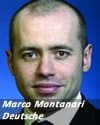Trading tools in Asia are being augmented further by the increasing use of short and leveraged exchange-traded funds.
“They have been a game changer in Korea and Japan, have just gotten started in Taiwan and they are bringing to the market characteristics that other products just don’t have” said Marco Montanari, head of passive asset management in the Asia Pacific Region for Deutsche Asset and Wealth Management.
The signs that these types of funds are being used for trading can be imputed from their rising day-to-day volumes. The average trading volumes for such ETFs is 45 times their assets-under-management, in comparison to 4.6 times for all ETFs in Asia. In 2014, turnover totalled US$304 billion, which was 40% higher than the previous year (US$217 billion).
Short and leveraged ETFs listed in the Asia Pacific region saw inflows of US$2.2 billion in 2014 – 12% of overall flows. The number of launches grew significantly. During the year, 32 new leveraged and short ETFs were launched, almost doubling the numbers available.
“The next step in Asia for these ETFs will hopefully be in Singapore and Hong Kong,” said Montanari. Regulators in China and Hong Kong are still checking over short and leveraged ETFs to see if they are suitable products for retain investors. Montanari went on to say “The concern is around launching a product when retail investors are not ready and there is a risk of them misunderstanding the product. We wouldn’t want to be the first to introduce a short ETF product that was going to have problems six months down the line.”
A short ETF is designed to profit from a fall in the value of the underlying index. They are not built through short positions in the constituents of an index, but rather via the use of options, futures and swaps. A leveraged ETF uses derivatives and debt to magnify the returns of an underlying index.
Regionally, Japanese leveraged and short ETFs lead the way, with assets under management of US$6.8 billion, followed by South Korea with US$3.2 billion.
Another trend detected in Asia is that of the growth of currency hedged ETFs, which have grown 16-fold to US$20.8 billion since the start of 2013.
From that time, until mid-2014, the growth took place almost entirely in Japan – as equity markets rose simultaneously with the yen weakening in value. Such ETF’s protected the investors’ currency losses as the Japanese index rose. This being in much the same way as a long equity position coupled with a separate short yen position.
“This trend of currency hedging is happening right now and we anticipate another US$50 billion moving from unhedged to hedged ETFs in the course of this year,” said Torsten Michalik, Deutsche’s head of global client group in its passive investment unit.
From the middle of 2014 onwards, there was been less growth in Yen hedged ETF’s, as investors increased their usage of non-Japanese hedged ETF’s from 7% of all such products to 38% – or US$8 billion, by the end of last year.
